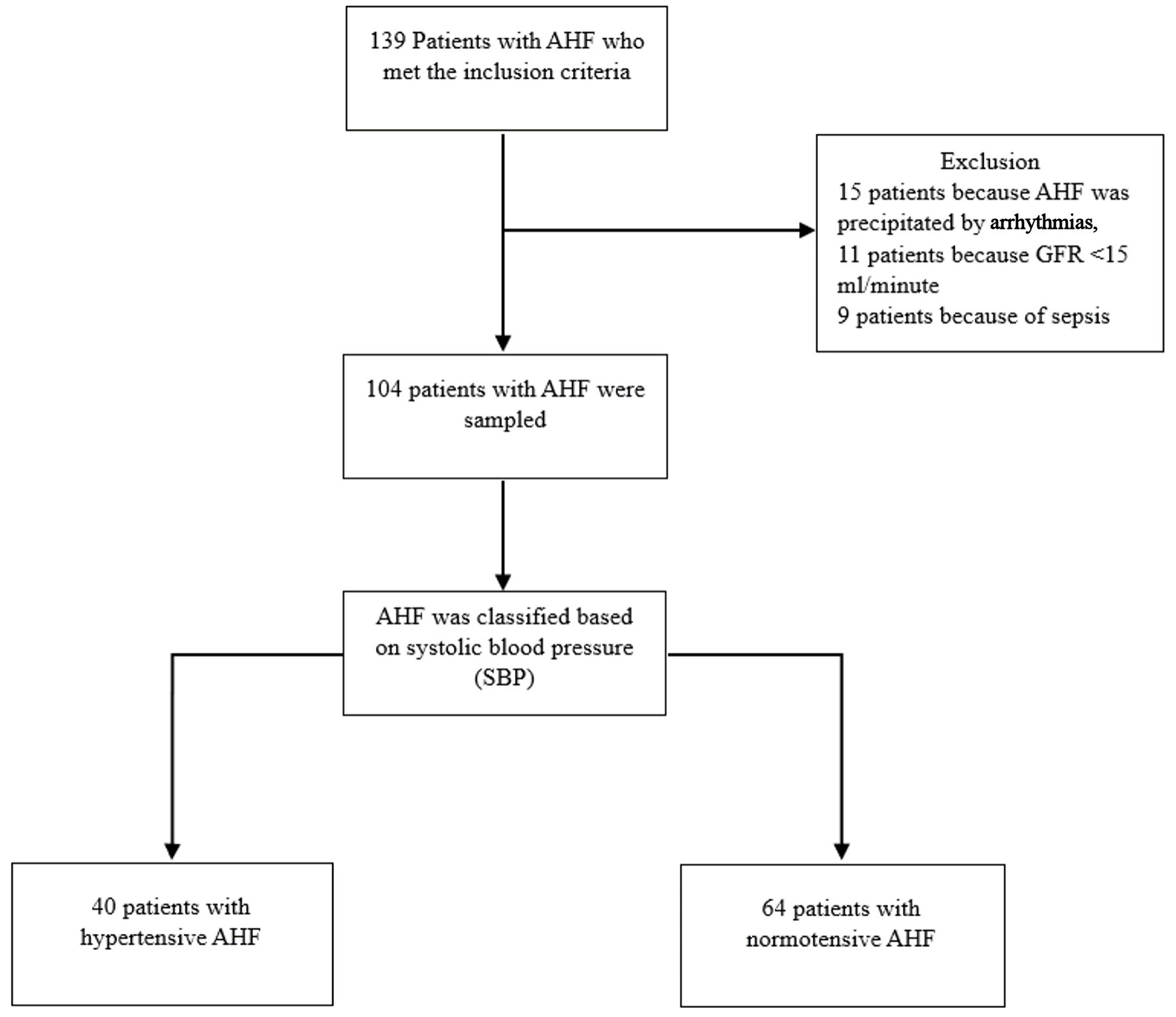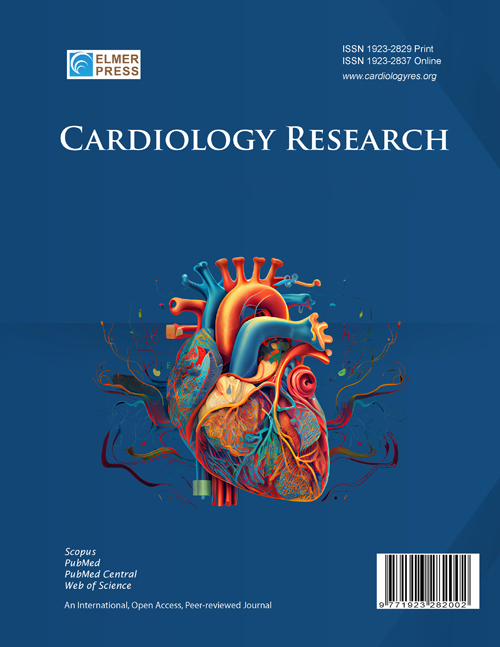Difference Analysis of N-Terminal B-Type Natriuretic Peptide, High-Sensitivity Troponin I, and Endothelin-1 Levels in Patients With Normotensive and Hypertensive Acute Heart Failure
DOI:
https://doi.org/10.14740/cr1742Keywords:
AHF, Normotensive, Hypertensive, NT-proBNP, High-sensitivity troponin I, Endothelin-1, Cardiac biomarker levelAbstract
Background: Acute heart failure (AHF) is a condition commonly affecting elderly patients. Heart failure is classified based on systolic blood pressure (SBP) into hypertensive (SBP ≥ 140 mm Hg), and normotensive (SBP < 140 mm Hg) categories. Differences in the pathophysiological mechanisms associated with each type of AHF may result in varying levels of biomarkers released by the heart during the episode, including N-terminal B-type natriuretic peptide (NT-proBNP), high-sensitivity (hs)-troponin I, and endothelin-1. Currently, there are no studies comparing the levels of cardiac biomarkers between normotensive and hypertensive AHF. Therefore, this study aimed to compare the levels of NT-proBNP, hs-troponin I, and endothelin-1 in patients with hypertensive and normotensive AHF.
Methods: A cross-sectional study was conducted in 104 patients with AHF (40 hypertensive, 64 normotensive) at M. Djamil General Hospital from August 2021 to November 2022. Clinical characteristics, hemodynamic parameters, and cardiac biomarker levels were assessed and compared between groups.
Results: Patients with hypertensive AHF had significantly higher sodium and chloride levels with lower urea levels. Echocardiographic assessment showed higher left ventricular ejection fraction (LVEF) (35.72% vs. 35.25%, P = 0.857), cardiac output (3.0 vs. 2.9 L/min, P = 0.669), and systemic vascular resistance (SVR) (2,276 vs. 2,200, P = 0.693), with lower tricuspid annular plane systolic excursion (TAPSE) (1.7 vs. 1.8 cm, P = 0.717), and estimated right atrial pressure (eRAP) > 8 (87.5% vs. 92.6%, P = 0.517) in normotensive AHF patients compared to hypertensive group, although there was no statistically significant difference between the two groups. The biomarkers test showed higher hs-troponin I levels (281 vs. 72.8 ng/L, P = 0.039) in normotensive AHF than those in hypertensive group. No significant differences were observed in endothelin-1 (12.12 vs. 12.02 pg/L, P = 0.510) and NT-proBNP levels (5,410 vs. 4,712 pg/mL, P = 0.122) between groups.
Conclusions: In patients with normotensive AHF, higher levels of hs-troponin I were observed, with no significant differences in other cardiac biomarkers. A higher proportion of males and a lower prevalence of hypertension as a risk factor were also noted in normotensive AHF, although these differences were not statistically significant.

Published
Issue
Section
License
Copyright (c) 2025 The authors

This work is licensed under a Creative Commons Attribution-NonCommercial 4.0 International License.









